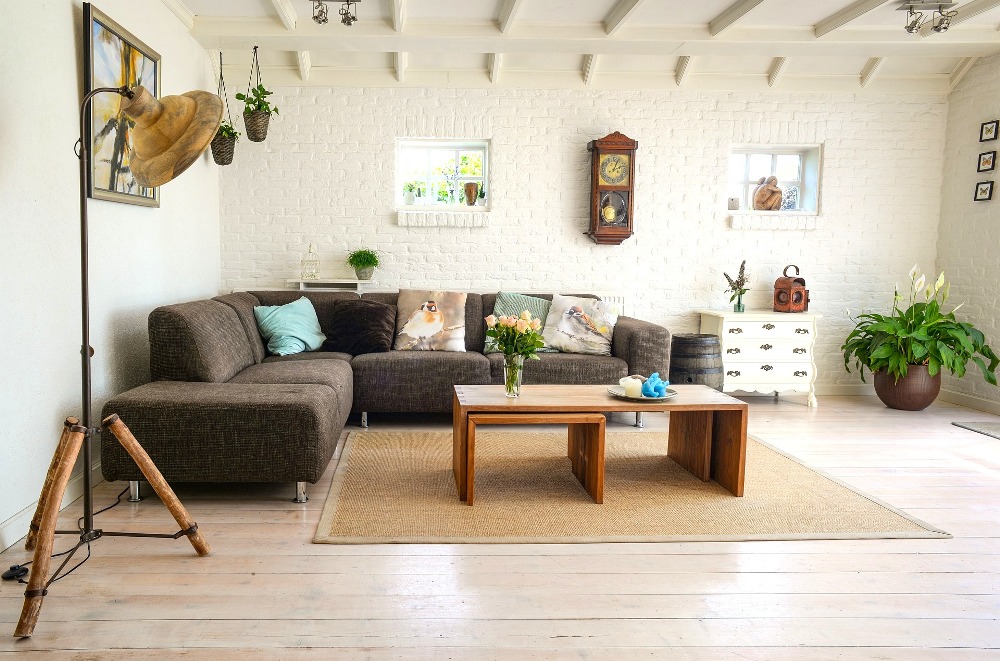Are you tired of walking into a dull, uninspiring room, feeling like it lacks character and charm? Do you dream of turning your living space into a sanctuary of comfort and style, a place where you can truly unwind and feel at peace? Look no further! In this guide, we delve into the world of interior solutions, exploring how simple changes can transform any space into a haven of beauty and functionality, allowing you to express your personality and create a home that reflects your unique taste and lifestyle. Whether you’re seeking to redecorate a single room or redesign your entire home, you’ll discover practical tips and creative ideas to bring your vision to life and make your living environment a true reflection of who you are.
Read MoreUnveiling the Power of Interior Design
Interior solutions encompass a holistic approach to optimizing space. Beyond mere decoration, they involve understanding the psychology of design and how it affects our mood and behavior. By strategically arranging elements within a space, interior design can create an environment that enhances our well-being and productivity.
Creating Ambiance – The Art of Lighting
Shedding Light on the Matter
Lighting plays a pivotal role in setting the ambiance of a room. It not only illuminates the space but also affects our perception of its size, shape, and mood. From soft, diffused lighting to bright, focused beams, understanding the different types of lighting allows us to craft environments that cater to our specific needs and preferences.
Let There Be Light: Types of Lighting
Ambient lighting provides overall illumination, creating a comfortable and inviting atmosphere. Task lighting focuses on specific areas where activities such as reading or cooking take place, ensuring adequate brightness for optimal performance. Accent lighting highlights architectural features or decorative elements, adding depth and visual interest to the space. Finally, mood lighting sets the tone for relaxation or entertainment, allowing us to create the desired ambiance for any occasion.
Maximizing Natural Light
Harnessing natural light is a cost-effective way to enhance any interior space. Positioning furniture strategically to maximize daylight penetration and using light-colored surfaces to reflect and amplify natural light can make a room feel brighter and more spacious. Additionally, incorporating elements such as skylights, large windows, or glass doors can further optimize natural light intake, reducing the need for artificial lighting during the day.
Maximizing Space – Furniture Arrangement Tips
Size Matters: Choosing the Right Furniture
When selecting furniture for a space, consider both its scale and functionality. Oversized pieces may overpower a room, while undersized furniture can make it feel sparse and unbalanced. Taking accurate measurements of the space and planning furniture layouts accordingly ensures that each piece serves its purpose without overcrowding or obstructing the flow of movement.
Flow and Functionality: Arranging Furniture
The layout of furniture within a room significantly impacts its usability and aesthetic appeal. Arrange furniture to facilitate smooth traffic flow and create defined areas for various activities. For instance, in a living room, position seating arrangements to encourage conversation and interaction, while in a bedroom, place the bed against the longest wall to optimize floor space and create a focal point.
Multifunctional Furniture Solutions
In smaller living spaces or multifunctional rooms, investing in multifunctional furniture can maximize versatility and efficiency. Pieces such as sofa beds, storage ottomans, and extendable dining tables serve dual purposes, allowing you to make the most of limited square footage without sacrificing comfort or style.
Infusing Personality – The Role of Decor
Personal Touches: Adding Character
Décor is the soul of interior design, providing opportunities to infuse personality and style into a space. Whether it’s family photos, cherished heirlooms, or unique artwork, incorporating personal touches adds warmth and authenticity to your environment, making it truly feel like home.
Strike a Balance: Mixing Patterns and Textures
Experimenting with patterns and textures can elevate the visual interest of a room and create a dynamic and layered aesthetic. Mix contrasting textures such as smooth and rough, soft and hard, to add depth and tactile appeal. Similarly, blend different patterns, but ensure they share a common color palette or theme to maintain harmony and cohesion.
Bringing the Outdoors In
Integrating elements of nature into the interior solutions can foster a sense of tranquility and connection with the outdoors. Incorporate natural materials such as wood, stone, or bamboo to add warmth and texture to your space. Additionally, introducing indoor plants not only enhances air quality but also brings life and vitality to any room.
Embracing Color: Choosing the Right Palette
Setting the Tone: Color Psychology
Color has the power to evoke emotions and influence our perception of a space. Warm tones such as reds, oranges, and yellows can create a cozy and inviting atmosphere, while cool tones like blues, greens, and purples promote relaxation and tranquility. Understanding the psychological effects of color allows us to select hues that align with the mood and function of each room.
Harmonizing Hues: Creating Color Schemes
Creating a cohesive color scheme involves selecting a palette that complements the overall theme and style of your space. Whether you prefer monochromatic schemes for a minimalist look or complementary colors for a bold statement, striking the right balance ensures visual harmony and continuity throughout the room. Experiment with different combinations and shades to find the perfect palette that resonates with your personal taste and enhances the ambiance of your home.
Conclusion: Your Journey to Interior Excellence
Embarking on your interior design journey is an exciting adventure filled with endless possibilities. By implementing the tips and techniques outlined in this guide, you can transform your space into a reflection of your personality and lifestyle. From lighting and furniture arrangement to decor and color selection, every decision you make contributes to creating a harmonious and inviting environment that enhances your daily life.

FAQs
How can I make a small room appear larger?
To make a small room appear larger, maximize natural light, use mirrors to create the illusion of space, and opt for furniture with legs to create an airy feel. Additionally, consider incorporating multifunctional furniture pieces that can serve multiple purposes while maintaining an uncluttered look.
What are some budget-friendly interior solutions?
Repurpose existing furniture, embark on DIY decor projects, and shop secondhand for unique finds without breaking the bank. Moreover, explore the concept of minimalism by focusing on essential pieces and decluttering unnecessary items to achieve a stylish yet budget-friendly interior.
How do I create a cohesive design scheme?
Begin by establishing a focal point in the room, then choose a cohesive color palette and layer textures and patterns for visual interest and harmony. Furthermore, consider incorporating elements of biophilic design, such as indoor plants, to enhance the connection with nature and create a more cohesive and balanced environment.
What’s the importance of decluttering in interior design?
Decluttering creates a sense of calm and organization, allowing your design elements to shine and your space to feel more spacious and inviting. Additionally, adopting a mindful approach to consumption and investing in quality over quantity can contribute to a clutter-free and aesthetically pleasing living space.
How can I incorporate sustainability into my interior solutions?
Choose eco-friendly materials, invest in energy-efficient appliances, and repurpose or upcycle items whenever possible to reduce your environmental footprint. Furthermore, consider incorporating sustainable design principles such as passive heating and cooling techniques and maximizing natural ventilation to minimize reliance on artificial energy sources.

